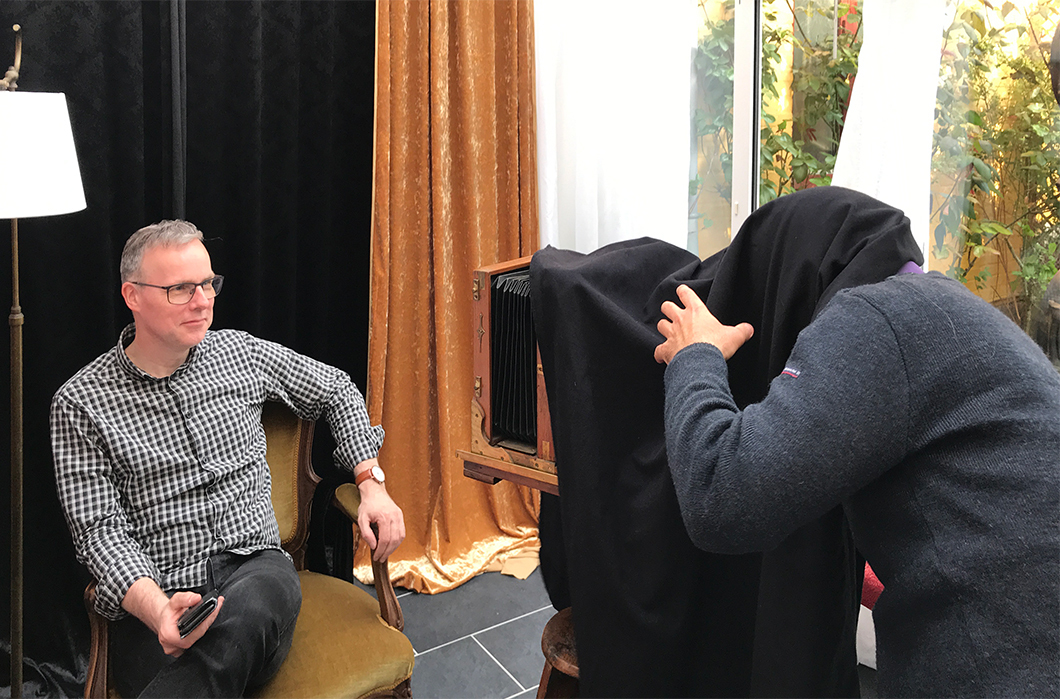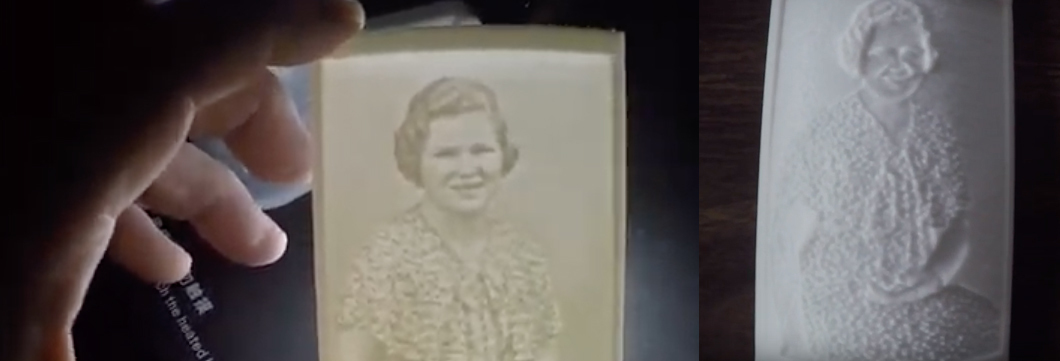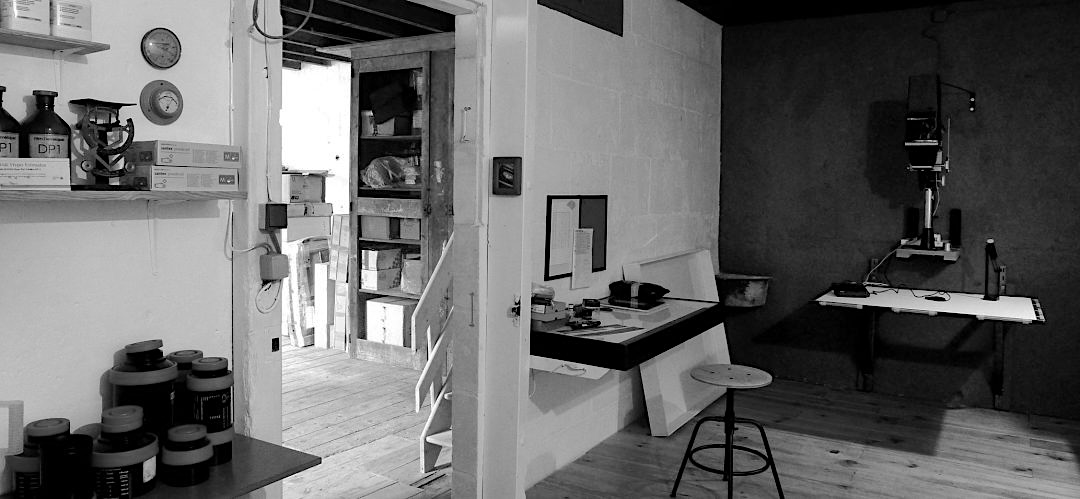LAB
The lab of Laterna Magica Museum is a space for exploration, education and development of photographic and filming techniques. The knowledge acquired form part of the museum's program as photo courses, lectures, and publications. The lab hosts a large vintage photographic collection including wardrobe and accessories
that is used in Copenhagen Vintage Studio established by the museum. It also contains a black and white darkroom for photo development, and a 3D printer transforming old and vintaged photos into lithophanes.



3D Lithophane Printing
As an entity dealing with visuality and visual media, Laterna Magica Museum also explores how to minimize the gap between the sighted and the non-sighted. This includes ways to transfer the visual experience into a tangible experience. Therefore, Laterna Magica's
special 3D lab offers lithophane printing, a method that transforms photos into 3D objects, making it possible for visually impaired persons to touch and recognize any sort of 2D photo.

Original photos taken around 1900 with digital preparation for 3D lithophane printing.

Lithophane developed from old black and white photo. 3D lithophane printing can be used to make the content of 2D images tangible and thus recognizable for both the seeing and the visually impaired.

3D lithophane printing from photo made into a digital relief.
Copenhagen Vintage Studio
Copenhagen Vintage Studio is the museum's time-machine. It is equipped for photo and video shoot and forms an important interactive part of Laterna Magica Museum.
The studio is specially decorated with furniture from the last century. It offers visitors a historical vintage male/female wardrobe full of accessories and costumes.
At the vintage studio guests can dress up and perform like actors from the last century, they can be photographed by analog or digital cameras producing vintaged photos of the present reality.

Photo session in Copenhagen Vintage Studio 2019 using multiple cameras spanning an entire century.

Photo editing for vintage look.

FAMILY PHOTO SESSION.

Vintaged portrait and photo session with flamenco dancers.
Black and White Photography - Darkroom
Laterna Magica Museum has its own darkroom for development of black and white photography. The museum provides courses in traditional black and white photography, film processing and development from negatives and positives. In addition, black and white techniques can be used in conjunction with computers with photographic software.
Till this very day no one can deny the power of black and white photography. Black and white photos have a classy and exquisite feel about them. They allow us to focus on composition, shapes, light and shadow, lines and perspective. They have an aesthetic, artistic look that is hard to produce in color and they definitely look timeless.
As technology advances in the world of photography with digital cameras doing most of the work for photographers, a passionate crowd of professionals, students, and hobbyists is returning to the darkroom in search of a more authentic and personal feel to their art.
Laterna Magica Museum's black and white lab is available for photographers interested in learning, experimenting and using traditional film processing techniques. They also have the possibility of taking photos using some of the museum's 100-years-old cameras.

Laterna Magica Museum's black and white darkroom. Through courses visitors can learn the art of black and white photography and development on photo paper.

Examples of photographic experiments combining old and new methods. Museum visitors have the possibility to learn unique photo and filming techniques developed by the museum by fusing the borders between analog and digital technologies, combining cameras from the 1890s with digital developing techniques.


Exploration and Interactivity

Zeiss Ikon Compur plate camera 1930 and Kodak Bulls Eye box camera 1897. Examples of cameras in the Laterna Magica Museum collection. Similar cameras are available for public use by visitors and students of Copenhagen Vintage Studio.

The craftsmanship involved in the production of the items on display at the Laterna Magica Museum, the emphasis on quality, and the notion of aesthetics are some of the aspects that fascinate us today, in a time of fast development, mass production and consumption. As we move with increasing speed in the digitized world, there is a growing appreciation of the tangible, physical world, which the museum collection help us explore.
Some of the items in the museum’s collection are antique, unique and rare, yet the Laterna Magica Museum finds it important to give audiences the opportunity to physically interact with and relate to part of the collection.
Laterna Magica Museum's collection of vintage cameras and related items is used in the museum's experimentation with photographic techniques. The explorations range from photographing, filming and processing methods from the early years of photo- and film making combined with current digital developments in photography, film making and beyond.
The knowledge obtained from fusing analog and digital techniques is made available to the public through courses during which the participants are able to use and interact with part of the museum collection, including over 120 years old cameras.
Esref Armagan - blind artist changing the history of visuality (film)

The visually impaired Turkish painter Esref Armagan films the audience during a press conference at MUBAM, Murcia, on his ability to draw and paint in a way sighted people understand, and captures everybody in the frame. Manifesta Biennial, Murcia, Spain 2010. Laterna Magica Museum

Esref Armagan developed his own braille system enabling him to share his experiences with sighted people. At the press conference he is demonstrating the system to a visually impaired woman. Laterna Magica MUSEUM
The Turkish painter Eşref Armağan was born visually impaired and has never been able to see. He taught himself to draw and paint at the age of six after wondering if he could paint the things he was feeling with his hands in a way others would understand. His use of other senses to understand and convey the world as he experiences it has been examined by researchers, particularly Professor John Kennedy of Toronto University, for years. With his unique ability to make 3D drawing and color paintings despite his visual disablity, Eşref Armağan has changed our understanding of visuality and hence the world.
Laterna Magica Museum founders produced a documentary that follows Eşref Armağan as he is invited to take part in one of Europe’s most important visual culture events, the Manifesta in Spain 2010, in a meeting between art, culture and modern science. We thought pictures have to do with the eye, but now it seems it has to do with perception, which can either be experienced through the eye or through touch. To Eşref Armağan, his ‘eyes’ are his hands.

